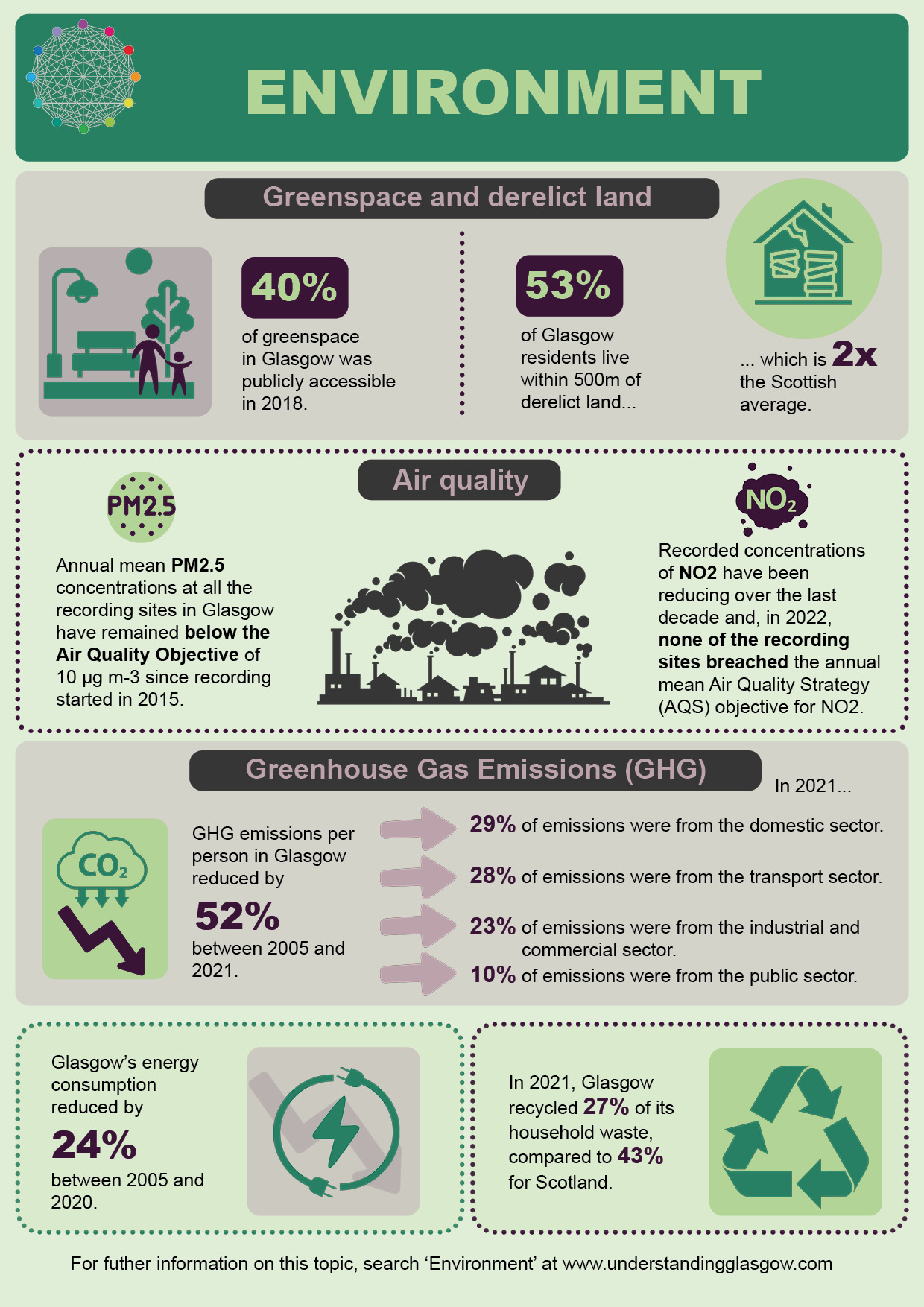Environment overview
Our environment is a key determinant of health. The surroundings in which we live and work can influence our health both directly and indirectly. Direct influences can come from being exposed to toxic, allergenic or infectious agents – the impact of air pollution on asthma or damp housing on health are specific examples of these direct impacts. Indirect influences can come about through the influence of the physical environment on our behaviour – for example, we know that the presence or absence of good quality, accessible greenspace influences physical activity and that people think accessible outdoor spaces are important, not just for exercise, but also for relaxation and socialising. Climate change and its multiple impacts on health is of increasing importance.

Click here to download the Environment infographic.
- Levels of air pollutants (PM10 and NO2) have reduced in the last decade in Glasgow.
- Greenhouse Gas (GHG) emissions have halved since 2005 but rose in 2021 after COVID-19 related restrictions on work and movement were removed.
- In 2021, Glasgow recycled 27% of its household waste, compared with 43% for Scotland as a whole.
- In 2018, 40% of the urban area was publicly accessible greenspace, however out of the four largest cities in Scotland, Glasgow has the smallest area of greenspace and publicly accessible greenspace per 1,000 people.
- 53% of Glasgow residents live within 500m of derelict land, double the Scotland average.
This section aims to provide a summary of a range of indicators that tell us about our physical environment. Current indicators in this section include: Air Quality; Energy Consumption; Greenhouse Gas Emissions; Greenspace/Open Space; Proximity to Derelict Sites; and Recycling. As other relevant information becomes available, particuarly in relation to climate change, we will add to this section.
The data on the Understanding Glasgow website comes from a variety of administrative sources and surveys, and the frequency of updates to these sources varies. The graphs and text on each page should indicate the period to which an indicator refers. In some cases, where more recently published data is not available, we still use older published sources, such as the 2011 Census.
This page was updated in April 2025.
